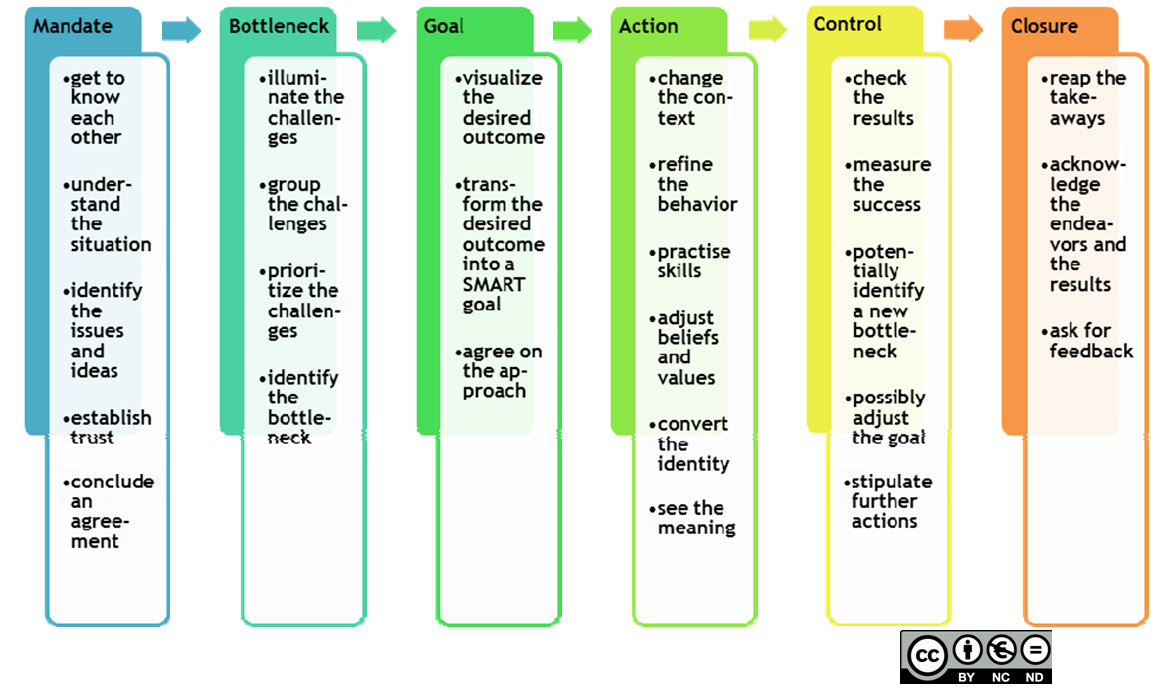A Coaching Model Created by Silvia Richter-Kaupp
(Business Coach, GERMANY)
My coaching model is called The Bottleneck-concentrated Coaching Model.
It is designed for people in leadership-functions such as entrepreneurs and managers who face all sorts of challenges in their everyday work life such as disturbing behaviors of staff, important decisions that keep them awake at night or projects that didn’t go well and re-echo in them.
Each challenging situation usually has one main bottleneck with several consecutive problems attached to it. Once the bottleneck is eliminated, the way is cleared for further development and growth.
The intention of my coaching model is to help my clients overcome their challenges as easily and quickly as possible.
This represents my belief that time is usually limited in business settings to a predetermined and rather small number of days, hours or sessions so that it is important to achieve visible results in a short time without pushing the client.
The Bottleneck-concentrated Coaching Model
The structure that guides me in my coaching practice is as follows:
 Mandate:
Mandate:
When I receive an inquiry about coaching my first step is the clarification of the potential mandate. In order to see if I am really a good sparring partner for this person I set up a conversation (usually a phone-call) with the potential client in which I ask questions about his situation, issues and ideas for the coaching.
Here are some examples of questions I ask:
When the potential client speaks I listen empathetically and summarize and reflect back what I heard him say – just like in a “real” coaching session. Of course I also answer the questions he addresses to me.
The intention of this conversation is to check whether I am able and willing to support the potential client in his endeavors and to give him an opportunity to experience coaching and get a sense of my coaching-style. When both parties conclude that they want to work with each other, we make an agreement.
Bottleneck:
Once we have entered into an agreement I usually start the coaching by letting the client illuminate his difficulties and challenges. I then help him group and prioritize the challenges and identify the current bottleneck. In doing so I use a model developed by Robert Dilts’ called
the (neuro)logical levels.
Dilts distinguishes six levels of change: environment, behaviors, capabilities and strategies, beliefs and values, identity and belonging, spirituality and purpose.
When listening to the client I ask myself:
What level seems to be the main bottleneck of his difficulties?
I then introduce the client to Dilts’ logical levels and ask him on what level he sees his current bottleneck. I then tell him the way I see it. In case we disagree I follow the estimation of the client.